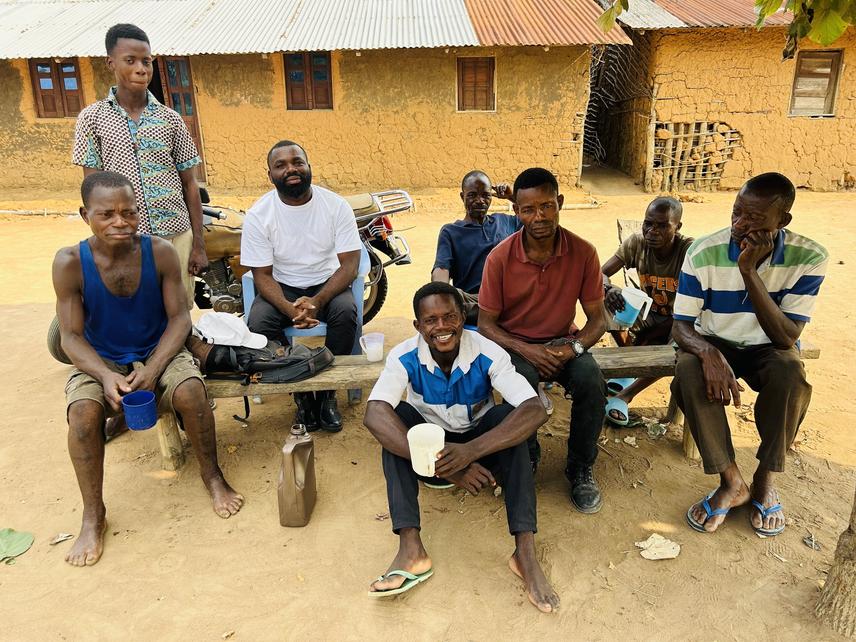Albert Kahenga Matongo
Other projects
13 Jul 2021
Ecologic, Floristic and Taxonomic Study of the Genus Raphia (Calamoideae, Arecaceae) in the Yangambi Biosphere Reserve (DR Congo)
In this project, I analyse how informal communication—such as gossip and rumours—shapes the outcomes of hybrid conservation and development intervention in the villages surrounding the Yangambi Biosphere Reserve in the Democratic Republic of the Congo (DRC). The main aim is to understand how local narratives and informal discourse shape perceptions, reveal power dynamics, and give rise to forms of resistance or adaptation in response to conservation and development initiatives. Gossip and rumours, often dismissed as untrue information or allegations within the villages, in fact constitute crucial channels of communication, particularly in contexts where trust in official authorities is fragile or altogether absent.

Fieldwork. © Jaloux Baelo.
The analysis of these narratives will shed light on the lived realities of local communities, their hopes, frustrations, and concerns. It is thus an attempt to move beyond institutional discourses and to grasp the complexity of the relationships that exist between local populations and the conservation projects that are being implemented in their environment. Local perceptions, whether supportive or critical, reveal profound issues of legitimacy, social justice, and the distribution of benefits. Informal communication thus becomes a key to deciphering the power relations and strategies of adaptation or contestation employed by communities in the face of conservation programs.
To achieve these aims, I adopt a rigorous ethnographic approach alongside participatory workshops. These methods will not only enable the collection of authentic testimonies but will also create a space for dialogue where communities can express their expectations and suggestions. The idea is to place local people at the heart of the decisions that affect them, valuing their knowledge, their values, and their aspirations.
Ultimately, I aim to contribute to the adjustment of conservation strategies so that they become more inclusive, more equitable, and better adapted to local socio-cultural realities. I situate this work within a broader aspiration to strengthen community participation and to promote an approach to conservation that respects the identities and priorities of the affected populations. Through this, I also seek to reinforce the protection of endangered species, based on the principle that the sustainable preservation of biodiversity cannot be achieved without the full involvement of local communities. This renewed dialogue opens the way to a harmonious coexistence between conservation efforts and the needs of the riverside populations of the Yangambi Reserve.